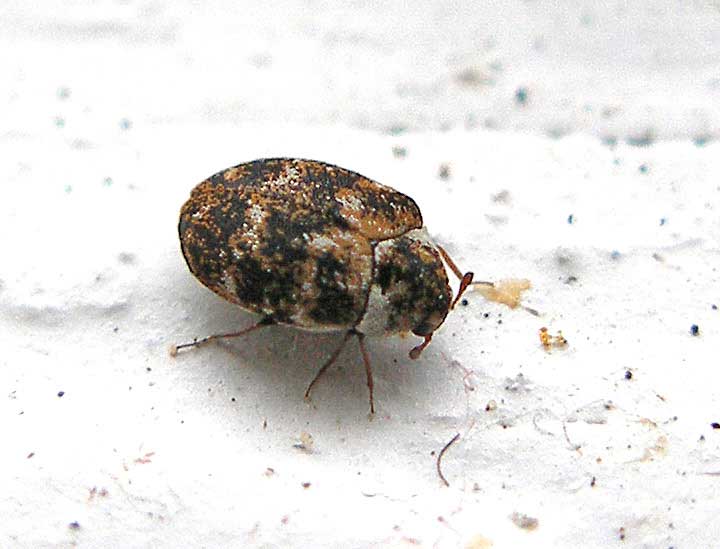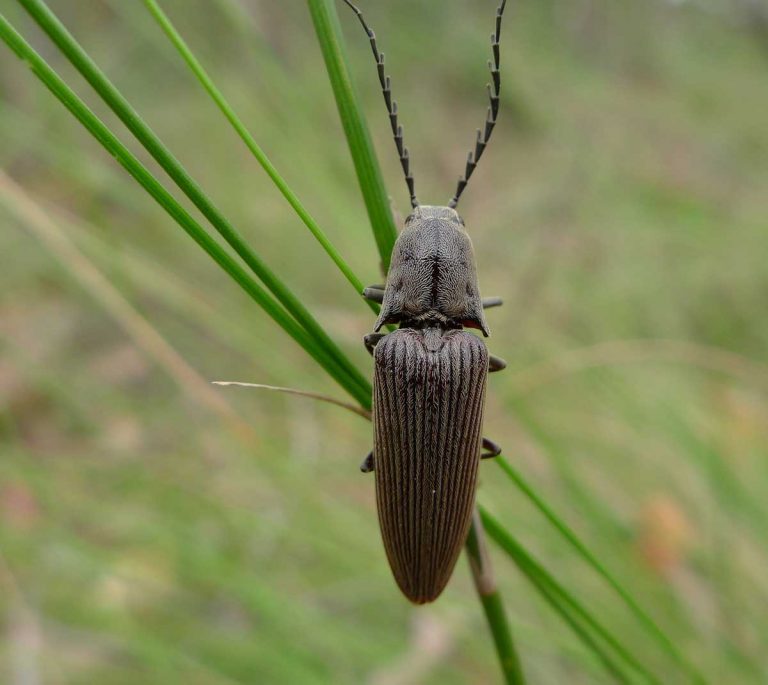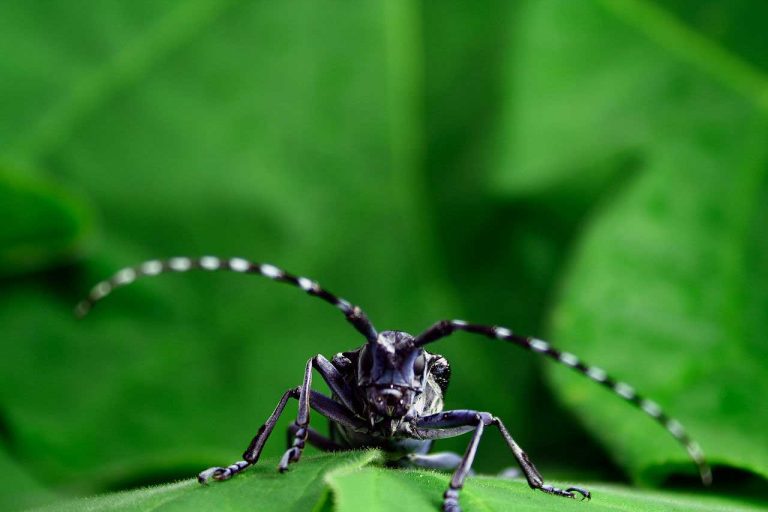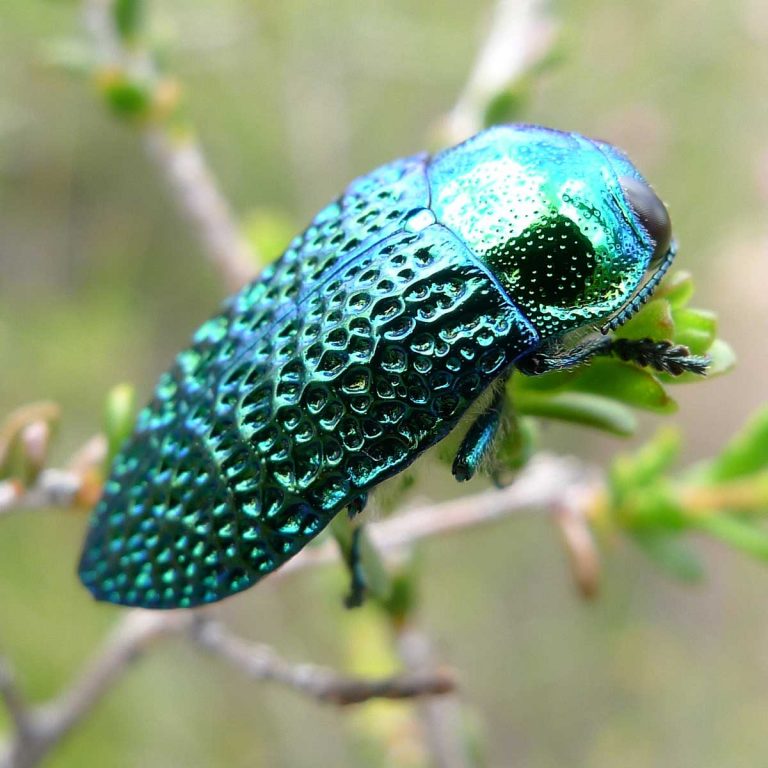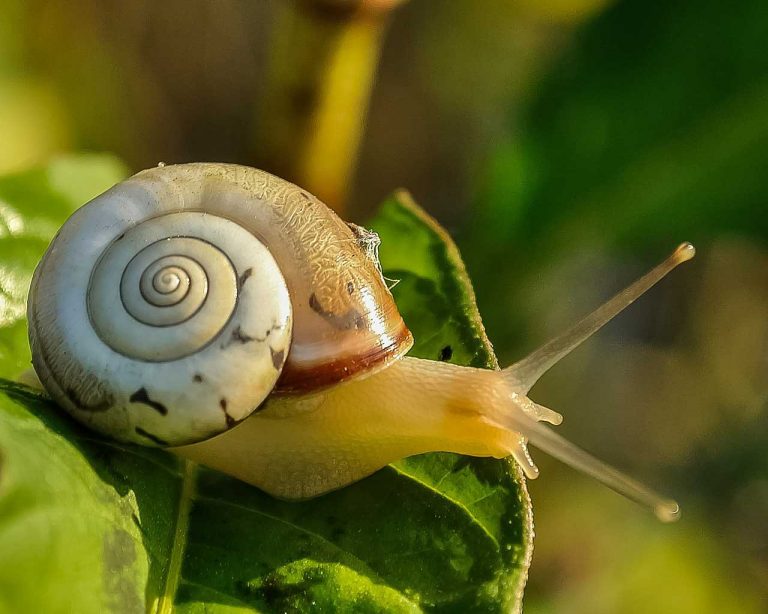Varied Carpet Beetles
Scientific Classification
| Kingdom: | Animalia |
| Phylum: | Arthropoda |
| Class: | Insecta |
| Order: | Coleoptera |
| Family: | Dermestidae |
| Genus: | Anthrenus |
| Subgenus: | incertae sedis |
| Species: | A. Verbasci |
The varied carpet beetles in the larval form are common in houses, but the beetles themselves, do not cause any major harm. These beetles belong to the family Dermestidae. They are found throughout the U K. The species of these beetles are present in most of Europe, in the near East, in the East Palearctic Ecozone in North Africa, and in the Nearctic Ecozone. In the early spring and summer seasons, these beetles appear on windows and walls. The larval form of this beetle is known as the woolly bear. They are so-called because of the appearance of bristly hairs. These beetles are found in parks, gardens, woods, and also in houses. There are several species of carpet beetles, which are found in many regions of the world. These beetles enter into homes through windows, doors and by other openings. Its species are also found throughout the United States, in Oklahoma and New England. Adult beetles can live for 2 to 4 years. They are attracted to lights and live outside and feed many types of plants. These beetles are the few insects which can eat animal hide, fur, feathers and hairs. The larva eats animal products because it requires a fibrous protein Keratin, which is found in the tissues of animals. These beetles are active during the daytime.
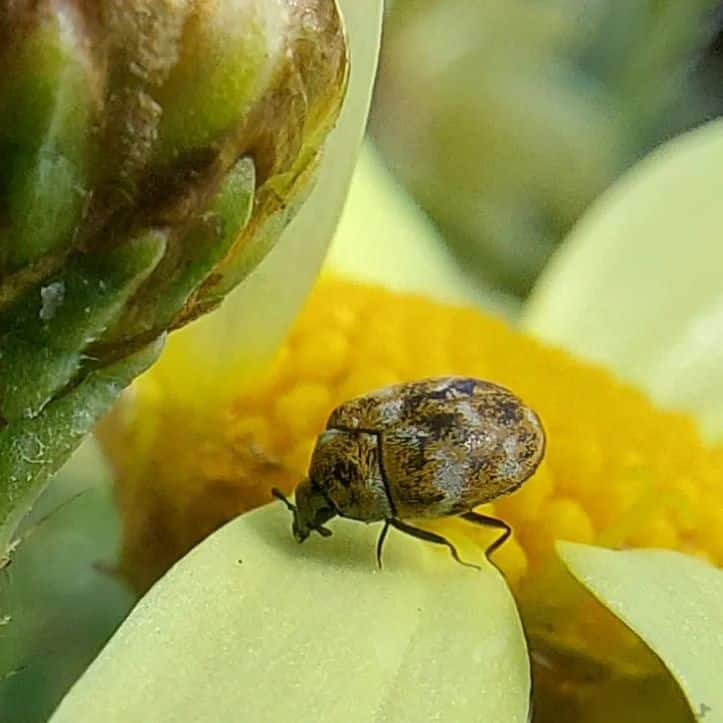
Anatomy
Varied carpet beetles are 1.7 to 3.5 mm in length. The body of these beetles is rounded, nearly spherical. Their Prontum and Elytra have an uneven pattern of yellow, brown and white colored patches which are formed by scales of different colors. These beetles are one of the most common insects which are found in Colorado homes. Adult beetles have 2 sets of wings. These beetles cannot see very well, so they communicate by using sounds, Pheromones and vibrations. Eggs of the beetles are white in color and are ¼ to ½ mm in length. These eggs have Spine like projections, which are visible at one end. And they are well-known for their oval shape. These eggs are very tiny and hard to see. And the larval form of these beetles is 4 to 5 mm in length. They are densely hairy and elongate. The body of the larva is covered in a pattern of dark brown stripes and alternating light colors. Usually, their body is wider at the back than at the front. Along their rear abdomen, they also bear three pairs of hair tufts, which are used for their self defense. To lay eggs, the female beetles like to fly in the house. The larvae of the varied carpet beetles cause damage to the various things such as clothing, blankets, furniture, carpets and fur. Mostly, they are found in the musical instruments which have been stored for a long period of time. They are found on woodwind instruments and feed on the pads. These beetles can adapt to every environment. They like to live where they have food to eat. Many species of animals eat carpet beetle larva outside and the many species of ants also eat these beetles. They are well known for the irritating nature of their hairs. These beetles are attracted to odors and scents. Carpet beetles chew through fibers, and cause the upper fibers to come loose.
Life Cycle
The life cycle of the varied carpet beetle depends upon the environmental conditions. The life cycle goes under complete Metamorphosis and it takes 1 to 3 years to complete. In the early summer and spring season, the larvae hatch from the eggs found in stored fabrics or in the nest of birds. They can lay their eggs indoors and also infest the mice, nest of birds and other insects also. At a time, a female beetle can lay 100 eggs. Within 7 to 35 days, the eggs will hatch into the larva. The larval stage is the destructive stage of these beetles. Adult carpet beetles are fliers, so they can move from one place to another. Larvae can survive without food for many weeks. Larva can take over a year to develop into adults. The duration of the pupal stage varies. And in the spring or summer season, Adult beetles emerge. Within 9 months to 2 years, young beetles develop into the adults. Climate and food also affect the development of the beetle.
Feeding Habits
The adult varied carpet beetles feed on pollen and nectar of a plant. And the larvae feed on dry materials and dead insects, Chitin and Keratin of natural fibers. Varied Carpet beetles, mostly feed on animal based products such as wool, silk, fur, leather and hairs of animals. As a result, these beetles infest the carpets, comforters, coat, furniture, pillows, blankets and clothing. They also attack synthetic fabrics, and they can also feed on them when these fabrics are grubby by oil, perspiration and food. Adult carpet beetles eat nectar and pollen of the plant. And the larva can feed on seed, animal food and other kitchen products. Both larvae and adult beetles like to eat in dark areas. Pet hairs are the most common food source of these beetles. The larva has the ability to survive without food for many weeks.
Reproduction
The larvae of varied carpet beetles are household pests. Usually, adult beetles lay their eggs under furniture or under baseboards or in air ducts. Once hatched, the larva hides in undistributed, dark areas until they pupate into adults. Carpet beetles lay eggs once in a year. These beetles reproduce quickly in heated buildings. During the summer and spring season, these beetles mate outdoor. Undistributed areas of warehouse, museums and homes are demanding locations to these beetles. Once the eggs are hatched, the insects spend its major times in the larval stage. The larva of varied carpet beetle remains in the shelter and feeding for six months to a year on surrounding materials.
As a Pest
Carpet beetles are important pest in rugs and wool carpets. They feed on plant materials such as grains, books, pet food and spices. As a pest they damage the household things and feed on them. They are also considered as museum pests because they are troublesome to the museum. These beetles can cause irreparable damage to the carpets and other products. Their infestations are recognized by their presence, when they gather around lights and windows.

Having discovered a fondness for insects while pursuing her degree in Biology, Randi Jones was quite bugged to know that people usually dismissed these little creatures as “creepy-crawlies”.

